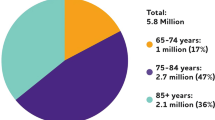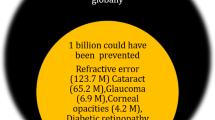Abstract
Purpose
Diabetic retinopathy (DR) has become the leading cause of blindness worldwide. In clinical practice, the detection of DR often takes a lot of time and effort for ophthalmologist. It is necessary to develop an automatic assistant diagnosis method based on medical image analysis techniques.
Methods
Firstly, we design a feature enhanced attention module to capture focus lesions and regions. Secondly, we propose a stage sampling strategy to solve the problem of data imbalance on datasets and avoid the CNN ignoring the focus features of samples that account for small parts. Finally, we treat DR detection as a regression task to keep the gradual change characteristics of lesions and output the final classification results through the optimization method on the validation set.
Results
Extensive experiments are conducted on open-source datasets. Our methods achieve 0.851 quadratic weighted kappa which outperforms first place in the Kaggle DR detection competition based on the EyePACS dataset and get the accuracy of 0.914 in the referable/non-referable task and 0.913 in the normal/abnormal task based on the Messidor dataset.
Conclusion
In this paper, we propose three novel automatic DR detection methods based on deep convolutional neural networks. The results illustrate that our methods can obtain comparable performance compared with previous methods and generate visualization pictures with potential lesions for doctors and patients.









Similar content being viewed by others
References
https://www.kaggle.com/c/diabetic-retinopathy-detection/leaderboard (2016)
https://github.com/lessw2020/Ranger-Deep-Learning-Optimizer (2019)
Andrearczyk V, Whelan PF (2016) Using filter banks in convolutional neural networks for texture classification. Pattern Recognit Lett 84:63–69
Bay H, Tuytelaars T, Van Gool L (2006) Surf: speeded up robust features. In: European conference on computer vision. Springer, pp 404–417
Buda M, Maki A, Mazurowski MA (2018) A systematic study of the class imbalance problem in convolutional neural networks. Neural Netw 106:249–259
Chawla NV, Bowyer KW, Hall LO, Kegelmeyer WP (2002) Smote: synthetic minority over-sampling technique. J Artif Intell Res 16:321–357
Decencière E, Zhang X, Cazuguel G, Lay B, Cochener B, Trone C, Gain P, Ordonez R, Massin P, Erginay A, Charton B, Klein JC (2014) Feedback on a publicly distributed image database: the messidor database. Image Anal Stereol 33(3):231–234
Dutta S, Manideep BC, Basha SM, Caytiles RD, Iyengar N (2018) Classification of diabetic retinopathy images by using deep learning models. Int J Grid Distrib Comput 11(1):89–106
Freeman WT, Roth M (1995) Orientation histograms for hand gesture recognition. In: International workshop on automatic face and gesture recognition, vol 12, pp 296–301
He K, Zhang X, Ren S, Sun J (2016) Deep residual learning for image recognition. In: Proceedings of the IEEE conference on computer vision and pattern recognition, pp 770–778
He T, Zhang Z, Zhang H, Zhang Z, Xie J, Li M (2019) Bag of tricks for image classification with convolutional neural networks. In: Proceedings of the IEEE conference on computer vision and pattern recognition, pp 558–567
Hu J, Shen L, Sun G (2018) Squeeze-and-excitation networks. In: Proceedings of the IEEE conference on computer vision and pattern recognition, pp 7132–7141
Joachims T (1998) Making large-scale SVM learning practical. Technical report, SFB 475: Komplexitätsreduktion in Multivariaten Datenstrukturen, Universität Dortmund
Keel S, Li Z, Scheetz J, Robman L, Phung J, Makeyeva G, Aung KZ, Liu C, Yan X, Meng W, Guymer R, Chang R, He M (2019) Development and validation of a deep learning algorithm for the detection of neovascular age-related macular degeneration from color fundus photographs. Clin Exp Ophthalmol 47:1009–1018
Krause J, Gulshan V, Rahimy E, Karth P, Widner K, Corrado GS, Peng L, Webster DR (2018) Grader variability and the importance of reference standards for evaluating machine learning models for diabetic retinopathy. Ophthalmology 125(8):1264–1272
LeCun Y, Bengio Y, Hinton G (2015) Deep learning. Nature 521(7553):436
Li X, Hu X, Yu L, Zhu L, Fu CW, Heng PA (2019) CANet: cross-disease attention network for joint diabetic retinopathy and diabetic macular edema grading. IEEE Trans Med Imaging 39:1483–1493
Li X, Pang T, Xiong B, Liu W, Liang P, Wang T (2017) Convolutional neural networks based transfer learning for diabetic retinopathy fundus image classification. In: 2017 10th international congress on image and signal processing, biomedical engineering and informatics (CISP-BMEI). IEEE, pp 1–11
Liaw A, Wiener M (2002) Classification and regression by randomforest. R News 2(3):18–22
Lim G, Lee ML, Hsu W, Wong TY (2014) Transformed representations for convolutional neural networks in diabetic retinopathy screening. In: AAAI workshop: modern artificial intelligence for health analytics
Lin Z, Guo R, Wang Y, Wu B, Chen T, Wang W, Chen DZ, Wu J (2018) A framework for identifying diabetic retinopathy based on anti-noise detection and attention-based fusion. In: International conference on medical image computing and computer-assisted intervention. Springer, pp. 74–82
Lindeberg T (2012) Scale invariant feature transform. Scholarpedia 7(5):10491
Noguera C (2015) Your diabetic patients: look them in the eyes. Which ones will lose their sight? http://www.eyepacs.com/diabeticretinopathy/
Olsson DM, Nelson LS (1975) The Nelder-Mead simplex procedure for function minimization. Technometrics 17(1):45–51
Park J, Woo S, Lee JY, Kweon IS (2018) Bam: Bottleneck attention module. In: British machine vision conference (BMVC). British Machine Vision Association (BMVA)
Pires R, Avila S, Jelinek HF, Wainer J, Valle E, Rocha A (2015) Beyond lesion-based diabetic retinopathy: a direct approach for referral. IEEE J Biomed Health Inform 21(1):193–200
Pires R, Jelinek HF, Wainer J, Valle E, Rocha A (2014) Advancing bag-of-visual-words representations for lesion classification in retinal images. PLoS One 9(6):e96814
Pratt H, Coenen F, Broadbent DM, Harding SP, Zheng Y (2016) Convolutional neural networks for diabetic retinopathy. Procedia Comput Sci 90:200–205
Ren S, He K, Girshick R, Sun J (2015) Faster r-cnn: towards real-time object detection with region proposal networks. Adv Neural Inf Process Syst 28:91–99
Ronneberger O, Fischer P, Brox T (2015) U-net: convolutional networks for biomedical image segmentation. In: International conference on medical image computing and computer-assisted intervention. Springer, pp 234–241
Russakovsky O, Deng J, Su H, Krause J, Satheesh S, Ma S, Huang Z, Karpathy A, Khosla A, Bernstein M, Berg AC, Fei-Fei L (2015) Imagenet large scale visual recognition challenge. Int J Comput Vis 115(3):211–252
Sánchez CI, Niemeijer M, Dumitrescu AV, Suttorp-Schulten MS, Abramoff MD, van Ginneken B (2011) Evaluation of a computer-aided diagnosis system for diabetic retinopathy screening on public data. Investig Ophthalmol Vis Sci 52(7):4866–4871
Sankar M, Batri K, Parvathi R (2016) Earliest diabetic retinopathy classification using deep convolution neural networks. pdf. Int J Adv Eng Technol 10:M9
Santoro A, Bartunov S, Botvinick M, Wierstra D, Lillicrap T (2016) Meta-learning with memory-augmented neural networks. In: International conference on machine learning. PMLR, pp 1842–1850
Selvaraju RR, Cogswell M, Das A, Vedantam R, Parikh D, Batra D (2017) Grad-cam: visual explanations from deep networks via gradient-based localization. In: Proceedings of the IEEE international conference on computer vision, pp 618–626
Séoud L, Faucon T, Hurtut T, Chelbi J, Cheriet F, Langlois JP (2014) Automatic detection of microaneurysms and haemorrhages in fundus images using dynamic shape features. In: 2014 IEEE 11th international symposium on biomedical imaging (ISBI). IEEE, pp 101–104
Shen L, Lin Z, Huang Q (2016) Relay backpropagation for effective learning of deep convolutional neural networks. In: European conference on computer vision, pp. 467–482. Springer
Silberman N, Ahrlich K, Fergus R, Subramanian L (2010) Case for automated detection of diabetic retinopathy. In: 2010 AAAI spring symposium series
Simonyan K, Zisserman A (2015) Very deep convolutional networks for large-scale image recognition. In: International conference on learning representations
Szegedy C, Liu W, Jia Y, Sermanet P, Reed S, Anguelov D, Erhan D, Vanhoucke V, Rabinovich A (2015) Going deeper with convolutions. Cvpr
Tang L, Niemeijer M, Reinhardt JM, Garvin MK, Abramoff MD (2012) Splat feature classification with application to retinal hemorrhage detection in fundus images. IEEE Trans Med Imaging 32(2):364–375
Vo HH, Verma A (2016) New deep neural nets for fine-grained diabetic retinopathy recognition on hybrid color space. In: 2016 IEEE international symposium on multimedia (ISM). IEEE, pp 209–215
Wang X, Girshick R, Gupta A, He K (2018) Non-local neural networks. In: Proceedings of the IEEE conference on computer vision and pattern recognition, pp 7794–7803
Wang Z, Yin Y, Shi J, Fang W, Li H, Wang X (2017) Zoom-in-net: deep mining lesions for diabetic retinopathy detection. In: International conference on medical image computing and computer-assisted intervention. Springer, pp 267–275
Woo S, Park J, Lee JY, Kweon IS (2018) Cbam: convolutional block attention module. In: Proceedings of the European conference on computer vision (ECCV), pp 3–19
Zhou K, Gu Z, Liu W, Luo W, Cheng J, Gao S, Liu J (2018) Multi-cell multi-task convolutional neural networks for diabetic retinopathy grading. In: 2018 40th annual international conference of the IEEE engineering in medicine and biology society (EMBC). IEEE, pp 2724–2727
Acknowledgements
This research is supported by National Key R&D Program of China (No. 2018YFC0115102), National Natural Science Foundation of China (Nos. 61872020, U20A20195), Beijing Natural Science Foundation Haidian Primitive Innovation Joint Fund (L182016), Beijing Advanced Innovation Center for Biomedical Engineering (ZF138G1714), Research Unit of Virtual Human and Virtual Surgery, Chinese Academy of Medical Sciences (2019RU004), Shenzhen Research Institute of Big Data, Shenzhen, 518000. We also thank the Faculty of Media and Communication, Bournemouth University (UK) with its support of Global Visiting Fellowship for Dr. Junjun Pan.
Author information
Authors and Affiliations
Corresponding author
Ethics declarations
Conflict of interest
The authors declare that they have no conflict of interest and personal relationships with other people or organizations that can inappropriately influence this work. There is no professional or other personal interest of any nature or kind in any product, service, and/or company that could be construed as influencing the position presented in, or the review of, the manuscript entitled.
Ethical approval
The data we used are open-source fundus color images, so there are no animal and human experiments.
Additional information
Publisher's Note
Springer Nature remains neutral with regard to jurisdictional claims in published maps and institutional affiliations.
Rights and permissions
About this article
Cite this article
Gu, Y., Wang, X., Pan, J. et al. Effective methods of diabetic retinopathy detection based on deep convolutional neural networks. Int J CARS 16, 2177–2187 (2021). https://doi.org/10.1007/s11548-021-02498-8
Received:
Accepted:
Published:
Issue Date:
DOI: https://doi.org/10.1007/s11548-021-02498-8




